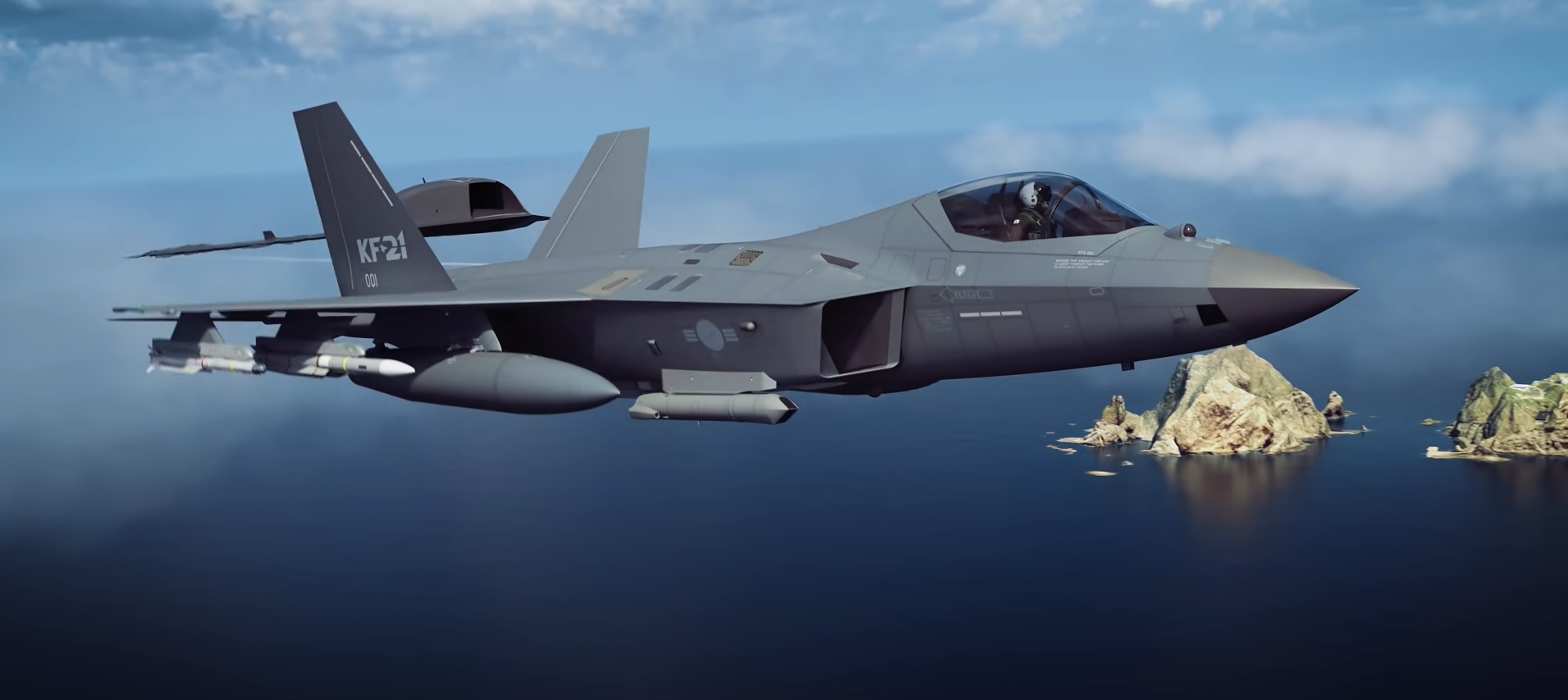KF-21 “Outclasses” India’s AMCA Fighter Program; Enters Production In Record Time; First Aircraft By 2026

Two years after its first flight, South Korea’s KF-21 Boramae multi-role fighter aircraft entered initial production in record time — despite hiccups in the program.
The Defense Acquisition Program Administration (DAPA) of South Korea announced that the KF-21 Boramae multirole fighter aircraft in South Korea was now in the early manufacturing phase. A ceremony was held at the Sacheon site of manufacturer Korea Aerospace Industries (KAI) on July 10 to commemorate the assembly of the first KF-21 production model.
According to DAPA, KAI also displayed a variety of automated manufacturing tools that would aid the production of KF-21. DAPA emphasized, “The automation process will increase the accuracy of the assembly process, maximize production efficiency, and contribute to shortening the production period.”
It also noted that automated manufacturing will strengthen KAI’s ambition to export the aircraft. After a successful maiden manufacturing run, the aircraft is expected to enter mass production in 2026.
The initial manufacturing comes after KAI announced last month that it had signed a 1.96 trillion won ($1.41 billion) contract with DAPA to begin production of the next-generation KF-21 fighter jet. At that time, KAI announced that they had signed a contract to produce 20 KF-21 fighters, with the agreement set to continue until 2027.
DAPA is expected to award a contract in 2025 for a second batch of 20 KF-21s. The Republic of Korea Air Force (RoKAF) will receive the first batch of aircraft from DAPA by late 2026. The period of mass production is poised to continue until 2032. The Republic of Korea Air Force (RoKAF) requires 120 KF-21s. Of these, 40 are planned to be delivered between 2026 and 2028, and the other 80 by 2032.
AfriPrime App link: FREE to download...
As per the original plan, KAI planned to sign a contract with the DAPA in 2024 to build 40 cutting-edge fighters in the first batch. However, following the recommendations of a feasibility study conducted last year, which highlighted the necessity for additional testing, particularly the jet’s air-to-air missile and active electronically scanned array radar capabilities, the production volume was halved to 20 units this year.
Nonetheless, it is a historic feat. The aircraft has moved towards production quickly, zooming ahead of other next-generation aircraft like India’s Advanced Medium Combat Aircraft (AMCA), which will not enter service until 2034.
The KF-21 is well on its way to entering production despite encountering several hiccups, especially with Indonesia, which has dragged its feet on cost sharing as a co-developer. As of February 2024, the country owed around U.S.$1 billion in payment.

Matters came to a head when allegations were made that some Indonesian engineers allegedly attempted to steal classified technologies related to South Korea’s KF-21 fighter jet. The accusations prompted a joint investigation by the National Intelligence Service (NIS) and the Defense Counterintelligence Command (DCC) of South Korea.
Despite setbacks and security breaches, the KF-21 has commenced initial production, reaffirming the confidence of international partners in the prompt manufacturing and delivery of South Korean technology. The potential export of the KF-21 to customers could serve as a motivating factor for KAI.
South Korea’s Next-Generation KF-21 Boramae
The KF-21, an advanced supersonic fighter, is slated to replace the South Korean Air Force’s aging F-4 and F-5 jet fleet. The Boramae fighter jet is set to be the main aircraft for South Korea’s Air Force and is expected to greatly improve the country’s three-axis defense system, which is aimed at countering potential threats from North Korea.
In the fifth-generation or 4.5++ generation race, South Korea is preparing to join the elite group of nations—the US, Russia, and China—with a fifth-generation warplane.
While the KF-21’s airframe is considered stealthier than fourth-generation fighters, it does not yet match the capabilities of the F-35, a fifth-generation aircraft.
It does not currently possess internal weapons bays, but future upgrades may see an addition, which could result in the aircraft being reclassified by Seoul as a fifth-generation fighter. Once that happens, KF-21 could become the fourth country to develop and operate a 5th-generation warplane. The aircraft currently has nine to ten external hardpoints for weaponry, depending on the configuration.
Though little information is available about the possible armament aboard the KF-21 aircraft, it is said to be equipped with air-to-air missiles, bombs, and cutting-edge machine guns.
Earlier this year, the KF-21 also conducted its first live-fire test with the long-range air-to-air Meteor missile. On the same day, DAPA confirmed the successful testing of the IRIS-T short-range air-to-air missile, further showcasing the KF-21’s capabilities.
In March this year, the KF-21 Boramae completed its first aerial refueling test, marking a significant advance in its development. As confirmed by DAPA, this milestone underscored the aircraft’s potential for extended-range operations.
AfriPrime App link: FREE to download...
- Questions and Answers
- Opinion
- Story/Motivational/Inspiring
- Technology
- Art
- Causes
- Crafts
- Dance
- Drinks
- Film/Movie
- Fitness
- Food
- Games
- Gardening
- Health
- Home
- Literature
- Music
- Networking
- Other
- Party
- Religion
- Shopping
- Sports
- Theater
- Wellness
- News
- Culture
- War machines and policy

